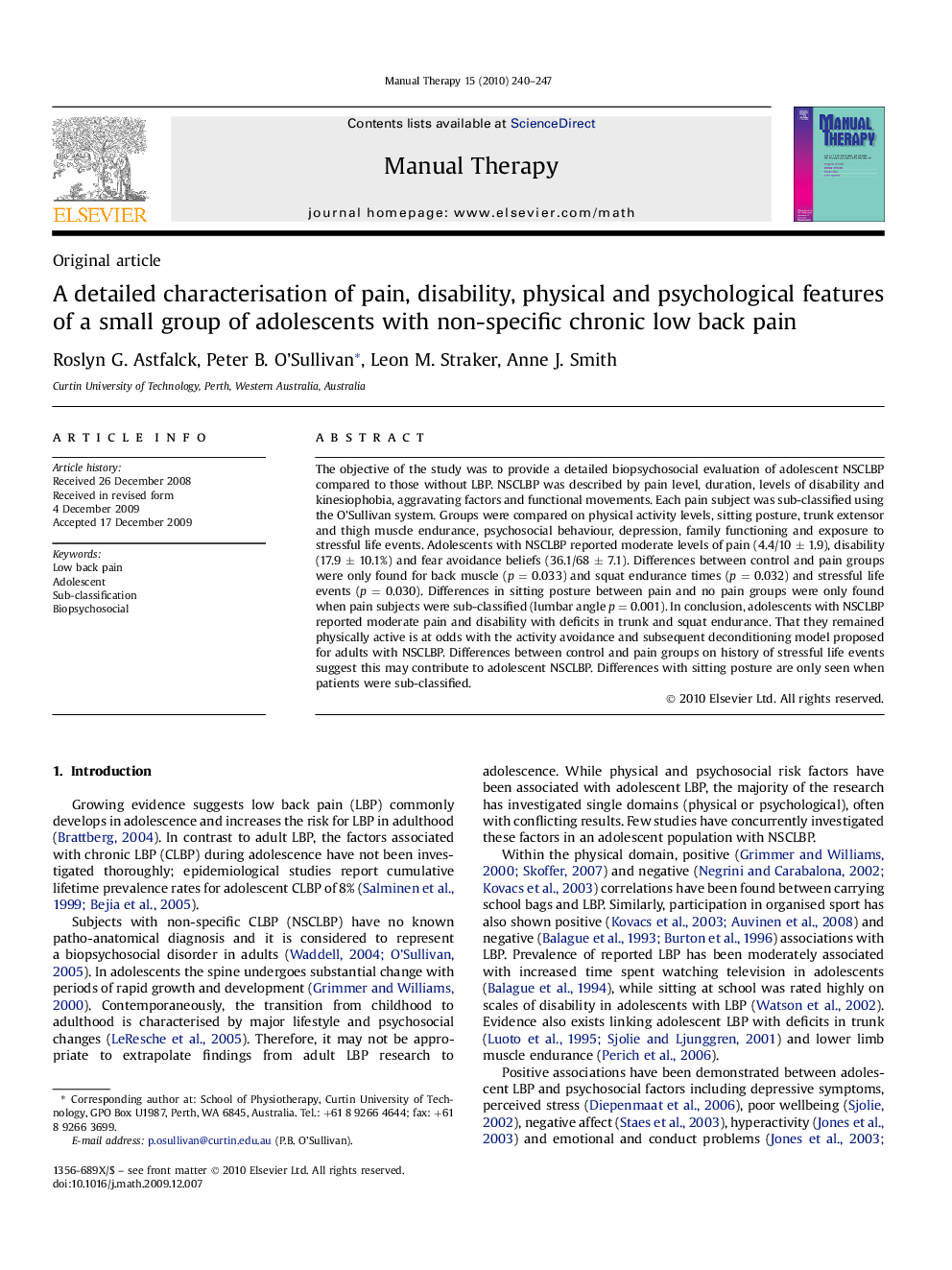| Article ID | Journal | Published Year | Pages | File Type |
|---|---|---|---|---|
| 5864980 | Manual Therapy | 2010 | 8 Pages |
Abstract
The objective of the study was to provide a detailed biopsychosocial evaluation of adolescent NSCLBP compared to those without LBP. NSCLBP was described by pain level, duration, levels of disability and kinesiophobia, aggravating factors and functional movements. Each pain subject was sub-classified using the O'Sullivan system. Groups were compared on physical activity levels, sitting posture, trunk extensor and thigh muscle endurance, psychosocial behaviour, depression, family functioning and exposure to stressful life events. Adolescents with NSCLBP reported moderate levels of pain (4.4/10 ± 1.9), disability (17.9 ± 10.1%) and fear avoidance beliefs (36.1/68 ± 7.1). Differences between control and pain groups were only found for back muscle (p = 0.033) and squat endurance times (p = 0.032) and stressful life events (p = 0.030). Differences in sitting posture between pain and no pain groups were only found when pain subjects were sub-classified (lumbar angle p = 0.001). In conclusion, adolescents with NSCLBP reported moderate pain and disability with deficits in trunk and squat endurance. That they remained physically active is at odds with the activity avoidance and subsequent deconditioning model proposed for adults with NSCLBP. Differences between control and pain groups on history of stressful life events suggest this may contribute to adolescent NSCLBP. Differences with sitting posture are only seen when patients were sub-classified.
Related Topics
Health Sciences
Medicine and Dentistry
Complementary and Alternative Medicine
Authors
Roslyn G. Astfalck, Peter B. O'Sullivan, Leon M. Straker, Anne J. Smith,
